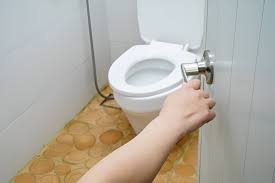A blocked toilet is one of the most common household plumbing issues, and it can quickly turn into a messy and stressful situation if not addressed promptly. Whether you’re dealing with a minor clog or a severe blockage, knowing how to handle the problem can save you time, money, and frustration. In this guide, we’ll walk you through the steps to unclog a blocked toilet, preventive measures to avoid future blockages, and when it’s time to call a professional.Understanding the Causes of a Blocked ToiletBefore diving into solutions, it’s essential to understand what causes a toilet to become blocked. Common culprits include:
- Excessive toilet paper: Using too much toilet paper can overwhelm the drainpipe, leading to a blockage.
- Non-flushable items: Items like wet wipes, sanitary products, or cotton balls are often mistakenly flushed and can cause severe clogs.
- Hard water deposits: Over time, mineral buildup from hard water can narrow the pipes, making blockages more likely.
- Foreign objects: Children or pets may accidentally drop toys or other objects into the toilet, causing obstructions.
Step-by-Step Guide to Unclogging a Blocked ToiletIf you’re faced with a blocked toilet, follow these steps to resolve the issue:
- Stop flushing immediately: Repeated flushing can worsen the problem by causing the water to overflow.
- Assess the situation: Determine whether the blockage is minor or severe. If the water is rising dangerously close to the rim, proceed with caution.
- Use a plunger: Place the plunger over the drain hole and push down firmly, then pull up sharply. Repeat this motion several times until the water begins to drain.
- Try a toilet auger: If the plunger doesn’t work, a toilet auger (or plumbing snake) can help break up or retrieve the obstruction.
- Use a homemade drain cleaner: A mixture of baking soda and vinegar can sometimes dissolve minor clogs. Pour one cup of baking soda followed by two cups of vinegar into the bowl, wait 30 minutes, then flush.
- Check the water level: If the water drains slowly, the blockage may still be partially present. Repeat the plunging or augering process.
Preventive Measures to Avoid Future BlockagesPrevention is always better than cure. Here are some tips to keep your toilet flowing smoothly:
- Use less toilet paper: Be mindful of how much toilet paper you use, especially if you have low-flow toilets.
- Dispose of non-flushable items properly: Keep a trash bin nearby for items like wet wipes, cotton swabs, and feminine hygiene products.
- Regular maintenance: Periodically pour hot water (not boiling) down the toilet to help dissolve any buildup.
- Educate household members: Ensure everyone in your home knows what can and cannot be flushed.
When to Call a Professional PlumberWhile many blockages can be resolved with DIY methods, some situations require professional assistance. Consider calling a plumber if:
- The blockage persists despite your best efforts.
- You notice recurring clogs, which may indicate a deeper issue in your plumbing system.
- There are signs of a sewer line problem, such as multiple drains backing up simultaneously.
- You suspect a foreign object is lodged deep in the pipes.
Final ThoughtsA blocked toilet is an inconvenience, but with the right tools and knowledge, you can often resolve the issue yourself. Remember to act quickly, use the appropriate methods, and take preventive measures to avoid future problems. If the situation seems beyond your control, don’t hesitate to seek professional help to prevent further damage to your plumbing system.

